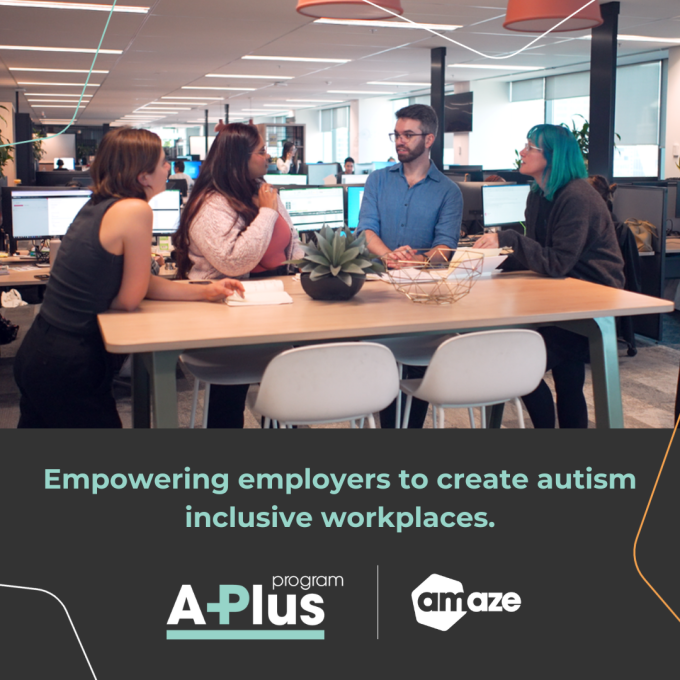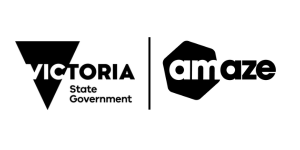Creating an autism friendly workplace
The benefits of implementing autism friendly practices in your organisation can extend far beyond your Autistic employees, with many of these improvements and adjustments having benefits for everyone. Below are some examples of changes you can begin to implement today as you kick-start your journey to creating an autism friendly workplace that works for everyone.
1. Make it autism friendly from the very start
Improve the experience from the outset for all potential employees by making small changes to your recruitment process. Interviews can be a nerve-wrecking experience for anyone, and having to process and answer a series of questions on the spot can impact a person’s ability to perform at their best, including for some Autistic people. Making a small change to your recruitment process by providing interview questions to candidates in advance can produce better results for everyone and allow your organisation to identify the best candidate for the role.
2. Improve the onboarding impression
Bringing someone into your organisation is a critical step that begins to lay the foundations of an employee’s ultimate success in their role. However, an induction process that is not accessible or inclusive can significantly influence how an employee feels about your organisation. Types of adjustments that you can make to your onboarding process to make it more autism friendly can include:
• Getting the employee involved in the onboarding process – invite them to tell you about their needs and let them know about what they can expect.
• Providing them with an onboarding plan that clearly outlines the process, expectations and schedule.
• Setting them up with a mentor or buddy that can help them to get to know the organisational culture.
These are just a few examples but many of these small improvements to your onboarding process will be good for both Autistic and non-Autistic employees.
3. Allow for adjustments
A workplace adjustment is a modification to a work process, practice, procedure or setting that enables a person with a disability to perform their job in a way that minimises the impact of barriers they face at work. Removing barriers that impact upon an Autistic employee’s ability to do their best work is in everyone’s best interest. This might include things like providing noise cancelling headphones so that they can block out unhelpful sensory stimuli and increase their focus, or always following up verbal communication in writing with a recap of what was discussed. Everyone’s needs will be different so it’s important to have an organisational commitment to checking in with your employees and ensuring that they have the right support in place to perform at their best.
4. Create an autism friendly workspace
Some Autistic people process sensory stimuli differently to non-Autistic people, and it can significantly influence how they experience an environment. Examples of sensory stimuli can include light, heat, sound and touch. While office environments can be large and busy spaces, there are small changes that you can make to help enable your Autistic employees to do their best work in a space that is comfortable and inviting. Having a designated low-sensory room, offering adjustable lighting or light-covers, or minimising strong smells are all examples of adjustments that can be made to support the wellbeing and focus of all staff members.
5. Empower your managers and teams with autism friendly knowledge
Making your organisation an autism inclusive workplace can have huge benefits for all employees, but it starts with awareness and understanding. Equipping your managers and teams with the knowledge and confidence to create an autism friendly environment, and the know-how to support their Autistic colleagues, is vital to ensuring a culture of diversity, acceptance and innovation. This can be especially important for managers to help them support and get the best out of their Autistic team members. Organisations can make a start by providing information or training for managers and teams on autism in the workplace. Amaze’s ‘Autism in the workplace’ interactive webinars are a great place to start. To find out more, email [email protected].
Want a copy of these helpful tips to take with you? Download this webpage as an information sheet below.
Want to find out more about how you can make your workplace autism friendly or take the next step?

Embed diversity and inclusion in your organisation with the A-Plus Inclusion Program
Make your workplace inclusive for Autistic people with Amaze’s new inclusion program that supports organisations to confidently and capably access the talents, fresh perspectives and unique skillsets held by Autistic people. The program focuses on the workplace environment and helps organisations to establish sustainable and neuroinclusive practices, policies and procedures.
It includes a variety of options to fit your organisational needs, including self-paced learning modules, workshops and training, advisory services, and more.
To find out more, visit the A-Plus Inclusion Program hub.
Need autism information or advice?
Get free expert, independent and quality autism information from our national autism helpline, Autism Connect, over phone, email or webchat. This service supports Autistic people, their families and carers, healthcare professionals, teachers and the broader community. Open from 8am to 7pm, Monday to Friday.
Call 1300 308 699, email [email protected] or connect with one of our Autism Connect Advisors on webchat.
Funding acknowledgement
This campaign was made possible with the support of the Department of Families, Fairness and Housing.

Authorised by the Victorian Government, 1 Treasury Place, Melbourne